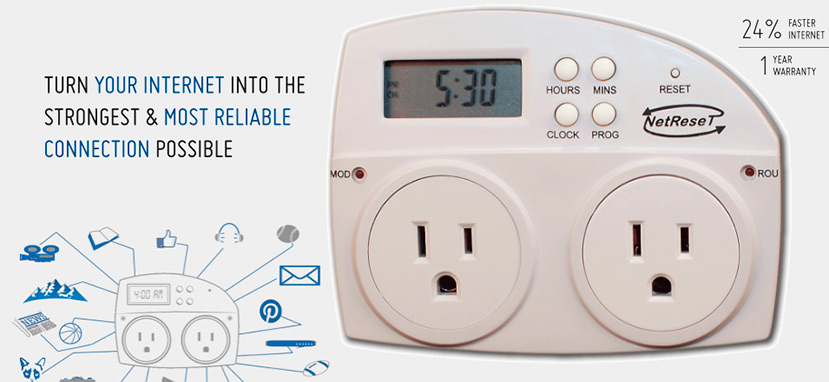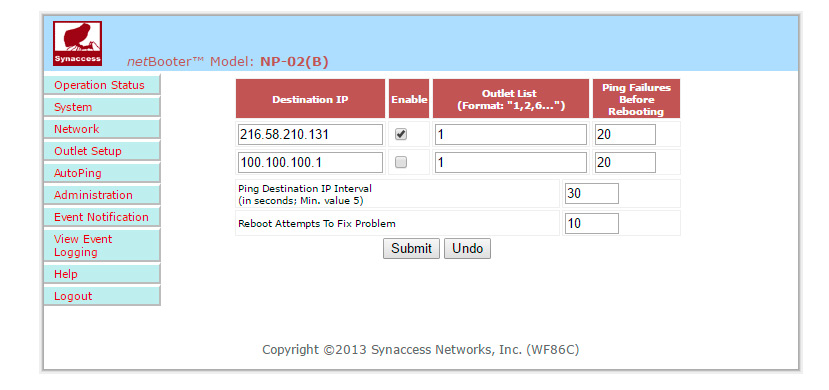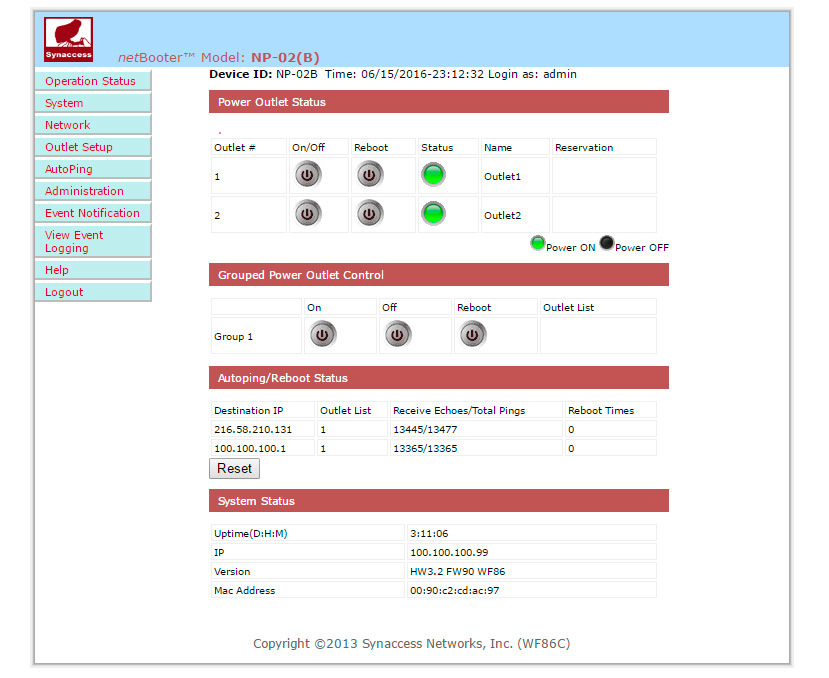One of the benefits that the IP outlet offers us is to be able to control our local or remote connectivity through highly known icmp queries such as ping. This way, if the internet connection is lost, it can switch off and on our equipments automatically.
Recently I have seen – likely you too – a little device that has a relatively affordable price which detects if our internet enabled devices are not able to connect to the internet and then automatically resets our modem. It is ResetPlug, costs 60 Dollars and has been widely publicized as an innovative product even though in reality it is way too far from being the first device that provides this kind of services.

Netrest is another similar solution, but it actually doesn’t work in a “smart” level, but it uses the daily reboots, usually scheduled at night to refresh our router, optical network terminal (ONT), modem and other, status.

There is also an older solution that the IT professionals have been using during decades and that is now quite accessible. I am referring to the IP Rack switchers. This kind of devices can work in two different ways, detecting the connection and refreshing the line on a scheduled basis.
Today we will see how easy is to establish a reboot of our router- turning it off and on – controlling with ping the current status of a remote server. Not all of the ip rack switches can be configured in the same way, some have a web interfaces and with some others we may have to use telnet, however the principles are the same.
We can find switches more or less powerful, as with any other kind of products, but basically they all do the same. To control the electrical connection of all of our devices manually or automatically.
It is about making a remote server to require an internet connection logically, and if it is not responding then after a predefined number of attempts (this is important because sometimes it could be a momentary failure on the network or a packet that did not arrive in time) to turn off our router, ont, etc. so that it can reestablish the connectivity. This, as you see , is useful for those routers that get saturated and then finish making us lose our connectivity when we least expect it.
The idea is not being too anxious . We do not need our router to turn on, and off, every time that a ping fails. We have to be reasonable and nothing will happen to us for spending 10-15 minutes without internet connection. In fact. The most part of the time we will not even notice that the router has been rebooted, that is what it is really about.
The switch checks the IP of google.com by using the ping command, when it fails 20 times-trying every 30 seconds- it reboots (physically) the router and the optical network terminal in order to reestablish the connection of both devices.
We will look the AutoPing or ping section in our switch. Mine is just basic. However it is not less capable. As you see, it allows me to have destinations in IP form – We can choose which we want to- I use to use a local one. The very router and other external ip. The following important parameter is the number of failed pings before the rebooting process, normally i set 20 which scale every 30 seconds, as you see below. This means that it will take at least 600 seconds -10 minutes- to reboot the line just in case that it is really not working.
We have to choose an external ip that admits ping, logically. If we do not get a response, it will not work and finally we will enter in a loop. even when we can solve this issue -we will see it after- i choose the google’s IP because for me it is a very reasonable option when talking about stability and it is well configured to answer pings (ICMP Packets). Any other viable option will be welcomed.
As you see in the count, the check fails sometimes, but connectivity is not affected. That is why we have to be cautious in the configuration. We can be turning off and on our router unnecessarily if we are so anxious with the configuration of this automatic process. Experience is giving us our ideal configuration.
To avoid entering in a loop the IP switch has an extra parameter that is for rebooting the plug or plugs a limited number of times. In my case i have set 10 times. This means that it will be at least 100 minutes trying to reestablish the connection. This is enough for temporary failures in the connection but likely you will have to adjust this parameter depending on your experience.
In short. We have to configure an reliable and renowned external IP. So that we can use it for asking to it a response for the ping command. So if it fails a defined number of times , with previously fixed periods of time in a reasonable way. It will turn off the plug of the switch and will turn it on once more. This with a maximal amount of repetitions set in order to avoid entering into a loop that could damage any device and that normally does not lead to anywhere.
As far as I see , the the great majority of switches do admit this kind of configurations. Is a basic function. In addition we could program it to turn itself on and off daily. Se we consider that it could be safer and more appropriate for us. What is not clear to me is whether we could do this with smart switches. Which are more closely targeted to the automatic control by using the mobile or the tablet.


